In the vast world of seafood, the United States boasts a rich tapestry of choices from its coastlines, rivers, and lakes. Yet, not all American seafood is created equal. In this guide, we delve into the depths of the ocean to uncover the 10 worst-rated American seafoods that you should steer clear of. These choices have earned a notorious reputation for various reasons, including overfishing, environmental impact, and health concerns. As responsible consumers, it’s crucial to be aware of the seafood we consume and its implications.
From popular species to lesser-known catches, this compilation sheds light on the seafood varieties that fall short of being sustainable, healthy, or ethically sourced. Understanding the downsides of these options is a step towards making informed and conscientious choices when it comes to enjoying the treasures of the sea.
Avoid These Worst American Seafoods
When it comes to seafood, the United States boasts a rich variety of options, from succulent lobster to delicate salmon. However, not all seafood options are created equal, and some can leave your taste buds less than impressed. Let’s find here the worst-rated American seafoods, exploring why they fall short of culinary delight and offering insights into better alternatives.
1. Surimi

Surimi, commonly employed as a substitute for crab meat, is a processed seafood product derived from white fish. Although it might appear as a convenient and cost-effective choice, surimi frequently faces criticism for its artificial taste and the absence of authentic seafood flavor. The processing techniques applied in the creation of surimi tend to strip away much of the natural taste, resulting in a bland and unappealing culinary experience.
This seafood product is often considered a compromise, where convenience and affordability take precedence over the genuine seafood experience. While surimi serves as a useful ingredient in certain dishes, its limitations lie in its ability to replicate the rich, distinctive flavors of crab or other premium seafood. As a result, those with a discerning palate may find surimi to be a less satisfying seafood option compared to its unprocessed counterparts, which offer a more authentic and flavorful seafood experience.
2. Canned Tuna
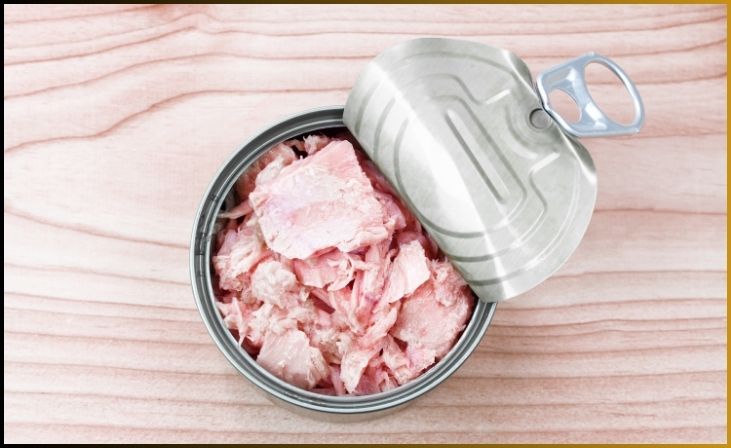
Canned tuna is a beloved pantry essential, cherished for its convenience and adaptability. Nevertheless, it occasionally falls short in terms of flavor and texture. Canned tuna, particularly when placed side by side with its fresh counterpart, may seem less enticing. The canning process can introduce a subtle metallic taste and a texture that doesn’t quite achieve the flakiness of fresh tuna.
While canned tuna is served admirably in sandwiches, salads, and casseroles, it may not fully capture the exquisite taste and texture of freshly caught tuna. The preservation process, while extending the tuna’s shelf life and accessibility, inevitably alters its characteristics. The slight trade-off in taste and texture is a consideration for those who crave the true essence of tuna, but the convenience and durability of canned tuna remain a compelling choice for everyday cooking.
Quick Link: The 10 Best Sparkling Water Brands Approved by Nutritionists
3. Breaded Frozen Shrimp
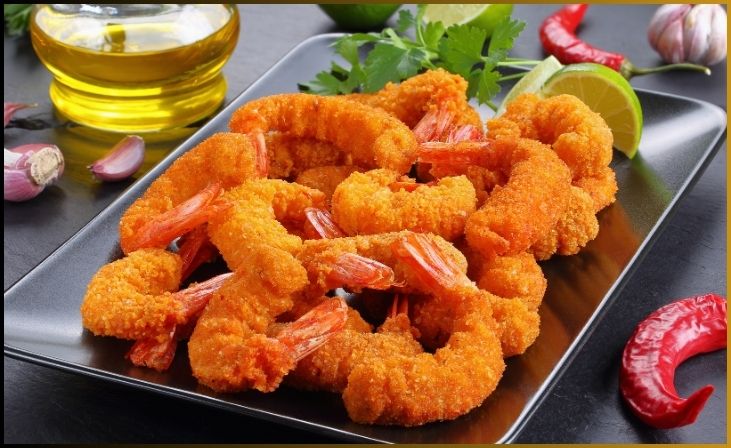
Frozen breaded shrimp is often perceived as a convenient choice for seafood enthusiasts seeking a speedy fix, but it frequently falls short when it comes to texture. Many frozen breaded shrimp products suffer from a rubbery texture after cooking, which can be decidedly unappetizing. Moreover, the breading can occasionally overwhelm the inherent sweetness and freshness that define freshly cooked shrimp.
The appeal of frozen breaded shrimp lies in its ease of preparation, making it a quick solution for meals. However, this convenience can come at the cost of sacrificing the delightful, delicate texture of fresh, succulent shrimp. It’s a trade-off for those who desire both convenience and an authentic seafood experience. While frozen breaded shrimp offers a fast solution, it’s important to recognize that it may not fully deliver the textural pleasures and taste of its freshly caught counterpart.
4. Canned Sardines
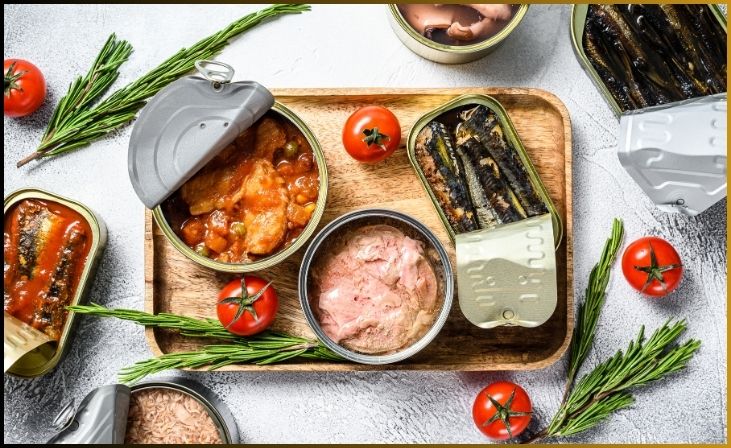
Canned sardines are renowned for their bold flavor and unmistakable aroma, which positions them as a seafood choice that divides opinion among enthusiasts. Some revel in their distinct taste, while others may find the fishy flavor quite dominant. Canned sardines, in particular, have earned a reputation as an acquired taste, indicating that they might not resonate with a broad spectrum of palates.
The unique qualities of canned sardines, including their strong taste and distinct aroma, can make them an intriguing choice for those who appreciate their intensity. However, their polarizing nature implies that they may not be universally embraced, and their bold flavor may not align with everyone’s seafood preferences. It’s this characteristic that distinguishes canned sardines as a seafood product that sparks diverse reactions and, in many cases, an acquired taste that becomes an acquired appreciation.
5. Crawfish Pie
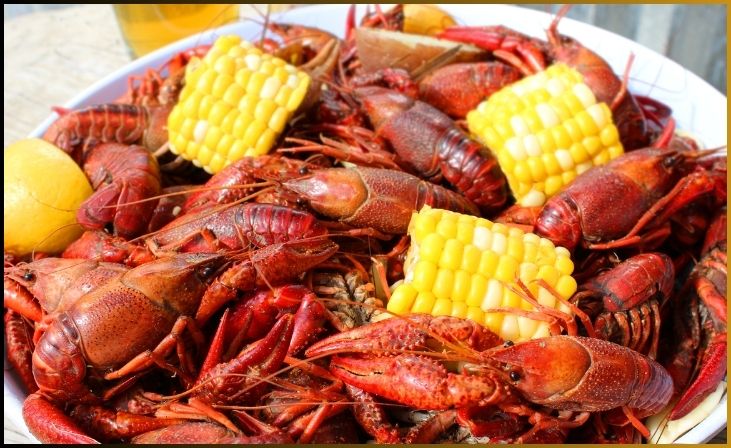
Crawfish pie, a beloved traditional American savory pie, originates from the vibrant culinary landscape of Louisiana. The heart of this pie typically features a flaky pie shell generously filled with a delightful medley of ingredients. This mixture comprises succulent crawfish tails, vibrant bell peppers, green onions, aromatic garlic, a flavorful stock, fragrant parsley, creamy milk, rich butter, thickening cornstarch, and a carefully curated blend of seasonings.
The artistry of crafting a crawfish pie unfolds as these components harmonize and are skillfully cooked to create a luscious, thickened filling. Once the mixture reaches its perfect consistency, it is lavishly poured into the awaiting pie crust. The pie embarks on its culinary journey in the oven, where it transforms into a masterpiece. Baking bestows a golden-brown hue to the crust while the filling simmers and bubbles, achieving a tantalizing union of flavors.
This Cajun delicacy is a true delight, frequently savored on weekends, and celebrates the rich and diverse flavors of Louisiana cuisine, enticing palates with its mouthwatering Cajun tradition.
6. B.C. roll
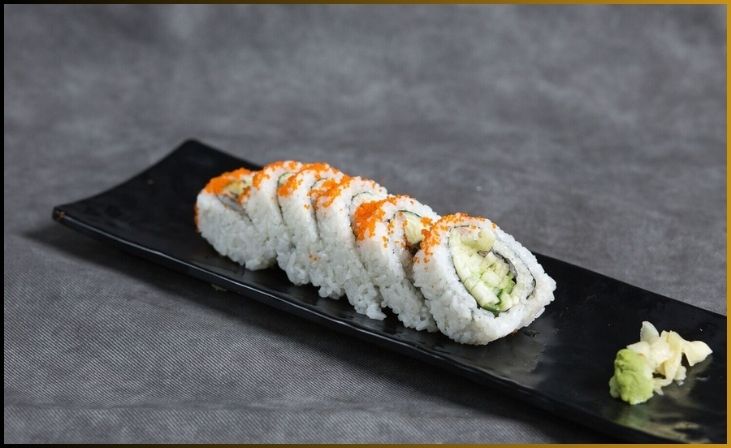
The B. C. roll is a delectable variety of makizushi, a traditional sushi roll that boasts a unique combination of flavors and textures. This roll features sushi rice as its base, harmoniously paired with barbecued salmon or the tantalizing crunch of barbecued salmon skin. To balance the richness, crisp cucumbers are included, imparting a refreshing contrast.
The name “B. C. roll” pays homage to the province of British Columbia, renowned for its bountiful and flavorful wild Pacific salmon. This sushi creation holds a special place in Canadian cuisine as it emerged from the vibrant city of Vancouver in 1974. Its origin is attributed to the ingenious culinary artistry of a Japanese chef, Hidekazu Tojo, who introduced this delightful fusion of Canadian and Japanese flavors. The B. C. roll remains a beloved treat for sushi aficionados, celebrating the rich heritage of the Pacific Northwest while captivating taste buds with its exceptional blend of tastes and cultural influence.
7. Jamaican Steamed Fish
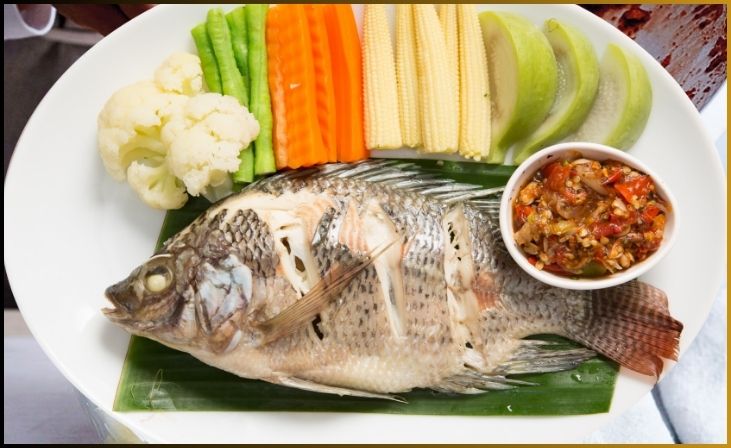
Jamaican steamed fish, a wholesome and highly flavorful dish, showcases the vibrant culinary traditions of Jamaica. This creation revolves around the gentle preparation of firm white fish, often snapper, in a tantalizing sauce. The sauce is a rich blend of butter, along with a medley of vegetables, including succulent tomatoes and fragrant onions, and a bouquet of aromatic herbs such as thyme, garlic, and black pepper.
To infuse the dish with depth and character, the fish is meticulously seasoned with a pinch of salt and a dash of garlic. The sauce’s complexity is further enhanced by the inclusion of scotch bonnet chilis, known for their fiery heat. The marriage of these ingredients results in a dish that offers a symphony of flavors.
Jamaican steamed fish can be savored as a standalone delight or coupled with complementary accompaniments, such as fluffy rice, boiled bananas, and crisp crackers. This harmonious fusion of ingredients and bold flavors defines the soulful essence of Jamaican cuisine, making it a cherished culinary experience.
8. Manhattan Clam Chowder

While New England clam chowder boasts its hearty blend of salt pork, mollusks, potatoes, and onions, New Yorkers offer their unique Manhattan-style clam chowder. This lighter variation takes the form of a tomato-based stew, resembling a minestrone, generously filled with ingredients like carrots, onions, potatoes, celery, and abundant chowder clams, all complemented by aromatic herbs such as thyme, oregano, and pepper.
Interestingly, it’s often noted that the flavors of Manhattan clam chowder significantly improve after a day, making it an ideal choice for preparation in advance. For those crafting this dish at home, allowing it to rest and reheating it the following day is a recommended practice.
Regarding its origins, there are diverse claims about the birthplace of Manhattan clam chowder. Some argue it was first crafted in Rhode Island despite its “Manhattan” moniker, with influences stemming from Italian or Portuguese immigrants. This flavorful stew showcases the rich tapestry of culinary traditions that have contributed to its evolution.
Also Read: 10 Essential Spices Every Home Cook Needs, According to Chefs
9. Bake and Shark
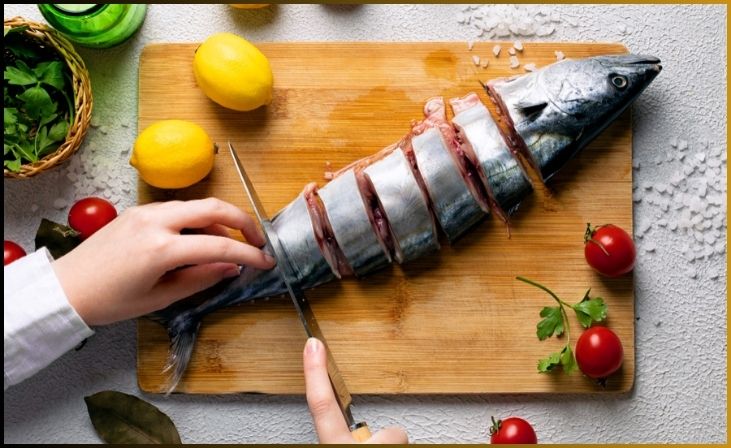
Bake and Shark, a distinctive Trinidadian street food, holds a special place in the hearts of locals, particularly during concerts, festivals, and festive gatherings. This delectable creation features shark meat that’s been meticulously marinated or seasoned, combined with an array of flavorful sauces, chutneys, and fresh vegetables, all nestled within a soft flatbread called “bake.”
This mouthwatering dish is closely linked with Maracas Beach, a hotspot known for its abundance of street stalls where bake and shark is lovingly prepared and served. The beach’s lively atmosphere and the variety of toppings and condiments make this street food a favorite among both residents and visitors, offering a taste of Trinidad’s culinary diversity and vibrant culture.
10. Escovitch Fish
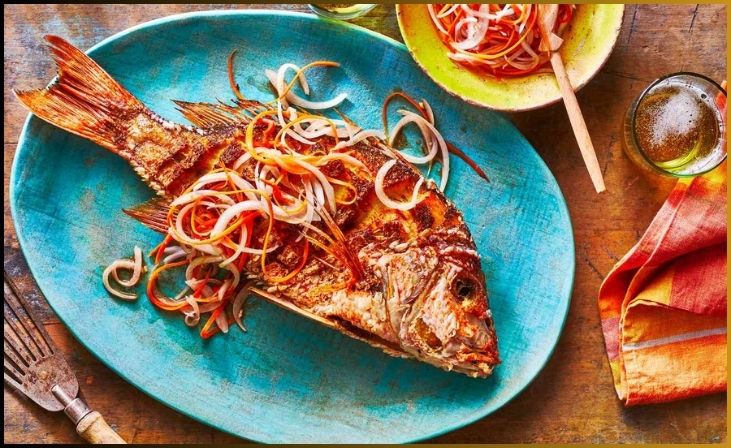
Escovitch fish stands as a beloved Jamaican culinary classic, distinguished by its distinct preparation method. This dish involves the meticulous seasoning and marination of fish, followed by a skillful frying process. The highlight of Escovitch fish is the peppery, vinegar-based dressing, which features vibrant bell peppers, carrots, and onions, contributing a flavorful and zesty twist to the dish.
A variety of firm-bodied fish options, such as red snapper, mullet, kingfish, or others, can be chosen for this delectable creation. Traditionally, Escovitch fish takes center stage during the Easter festivities, representing a cherished part of the holiday’s culinary traditions. It’s widely believed that the flavors of this dish mature and become even more delightful when enjoyed the following day, making it a delightful culinary experience for all who savor its taste.
Final Words
In conclusion, while the United States offers a bounty of seafood options, not all are equally deserving of a place on your plate. The 10 worst-rated American seafoods choices highlighted in this guide have raised concerns regarding sustainability, health, and environmental impact. By avoiding these options and opting for more responsible seafood choices, you can contribute to the preservation of our oceans and your own well-being. Remember, making informed decisions about the seafood you consume is a step toward a healthier planet and a more sustainable seafood industry.
FAQs
Seafood can be considered “worst-rated” due to factors like overfishing, unsustainable fishing practices, mercury or other contaminants, and negative impacts on marine ecosystems.
Yes, there are many sustainable and healthy seafood alternatives available. Look for seafood that is certified by organizations like the Marine Stewardship Council (MSC) or the Aquaculture Stewardship Council (ASC).
Look for eco-labels and certifications on seafood products, research the seafood’s source and fishing method, and consider using apps or websites that provide information on sustainable seafood.
The worst-rated seafood may contain high levels of contaminants like mercury, PCBs, or microplastics, which can pose health risks when consumed regularly. It’s important to balance seafood consumption with health considerations and choose lower-risk options.







